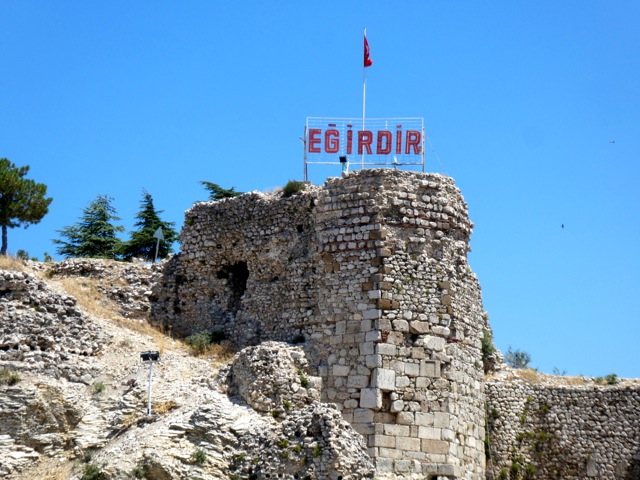
Eğirdir and the Turkish Lake District
Photographs by Mike Vickers
Feature photo above: There really is no mistaking where you are! The ruined Byzantine castle at Eğirdir
The furnace heat of Fethiye in early August finally proved too much and armed with a hire car and a small suitcase each, Jan and I fled inland, desperate for cooler climes. With nothing booked but full of cheerful optimism and a hankering for altitude, we headed up to the Turkish Lake District. Like the UK Lakes, it’s an area of crumpled upland containing – and the clue’s in the name – some lakes, but there is a significant difference in scale. The UK has definitely more lakes to offer and the fells and mountains of Cumbria are gorgeous but definitely gentler in profile, but here in Turkey although the lakes may be fewer in number, they are far, far larger and the mountains far, far higher, some running up to over 2500 metres.
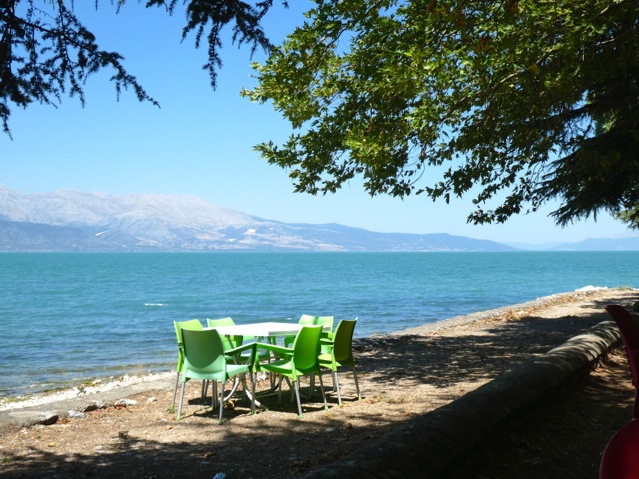
Three very large lakes dominate the area, Burdur, Eğirdir and Beyşehir, with several smaller lakes scattered around, including the very picturesque Lake Kovada. We drove past Burder and through Isparta – rose capital of Turkey – to reach our goal, the lakeside town of Eğirdir, sandwiched, like Fethiye, between water and mountain. This geographical bottleneck is the reason the town was originally founded by the Hittites, and later became an important stop on the main trading route between ancient Ephesus and Babylon.
We have passed through Eğirdir before on our way to Konya and Cappadocia beyond, and always stopped there for a tea break, but we’ve never stayed or explored the area. However, what little we saw on those journeys had always impressed so we decided this time to actually stay in the town. Eğirdir was busy with traffic, its pinch-point location ensuring a constant flow of vehicles, so we drove out of town past the old ruined Byzantine castle to Yeşilada, the furthest of two small islands out in the lake connected to the town by a causeway.
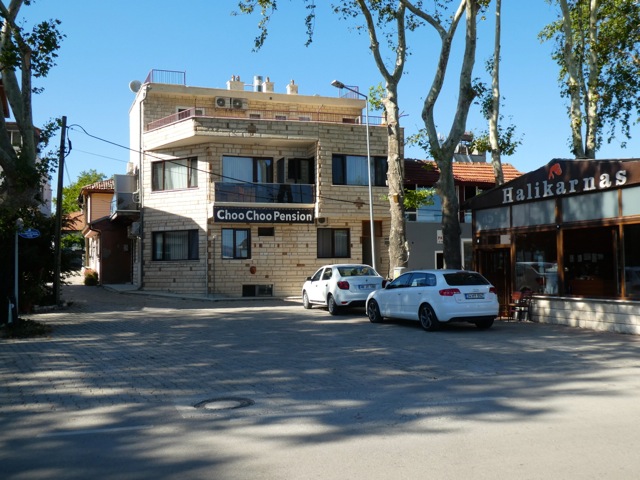
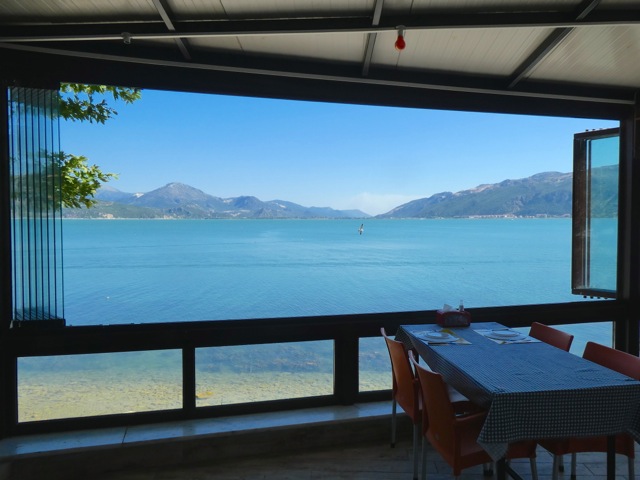
‘Hello, can I help?’ We paused to take stock and a voice floated in through the car window. This has happened to us twice before, once in Pamukkale and once in Çirali, and both times we ended up with very acceptable accommodation, so why not again? Hüseyin invited us inside to take a look at his rooms in the Choo Choo pension and we took one of the spacious penthouse bedrooms fronted by a generous roof terrace strung with peppers drying in the sun and with really lovely views out over the lake to the hills and mountains beyond.
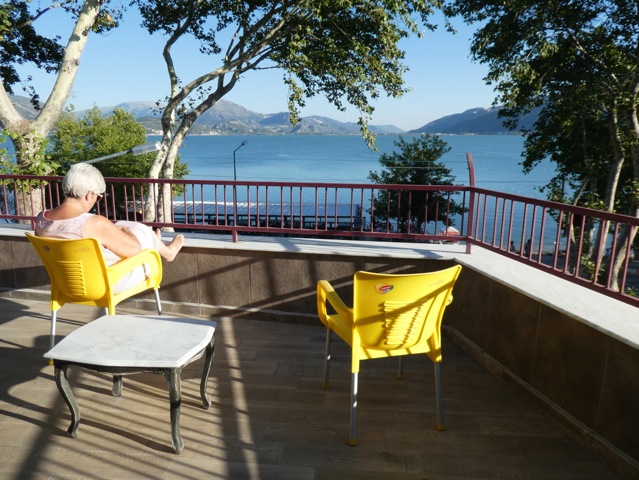
Once settled in, we went for an exploratory walk, following the only road around the periphery of the island. I can safely say that although it was not a long walk, the views out over the lake are stunningly expansive, but if you happen to look in the opposite direction towards the centre of the island you’ll discover a compact and close-knit village, its houses crowded together. Originally Greek, Yeşilada still contains many traditional timber and stone buildings only accessible via a real rabbit warren of narrow alleys and is now a peaceful haven compared with the bustling town at the other end of the causeway.
We had dinner at Halikanas, the lakeside restaurant associated with the pension, and watched as a chattering group of local kids arrived from town by boat for a swimming lesson on the nearby beach, all kitted out with orange inflatable armbands and an irrepressible urge to splash each other. What a sensible thing to do – if you live on a lake, learning to swim is as important as knowing how to cross the road.
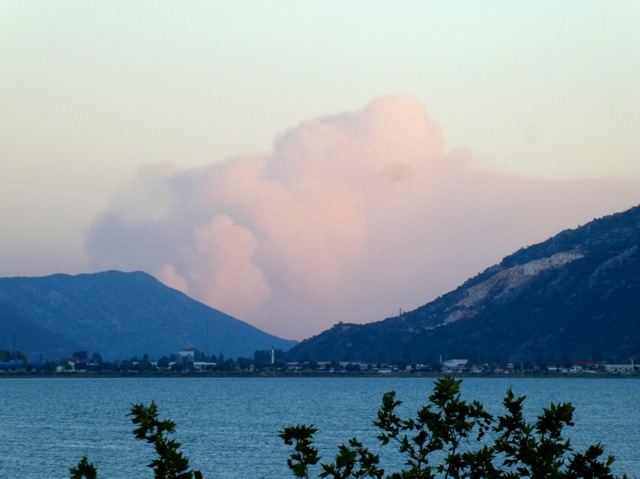
As the evening wore on, little boats took visitors out for leisurely half-hour cruises – their distant chugs echoing across the peaceful water. We retired to our roof terrace vantage point to watch island life and it was then we spotted wildfire smoke rising in the hills beyond the lake. Mercifully, after an hour or so, the column of smoke dissipated, but that was not the end of a surprisingly eventful evening. As I watched a family party standing on a landing stage, one of the women fell into the lake with a shriek and a splash. Soaked, and obviously furious, she soundly berated her husband – for it was obviously his fault even though he was nowhere near her point of entry! A little later, the whole family went out on one of these sedate thirty-minute chugs around the lake and blow me, if she didn’t fall into the sea again while getting out of boat, once more blaming her husband!
The following morning, breakfast was served overlooking the lake, the water tranquil and still, and I have to say it was one of the most beautiful locations for breakfast I’ve ever enjoyed. The breeze that kept us cool as we walked along the causeway into town a little later was so lovely that, as we sat in a shady tea garden with yet another wonderful view, we decided we wanted leave the sweatbox that was Fethiye and come to live in Eğirdir. Had any of you been there with us, you would have agreed in an instant!
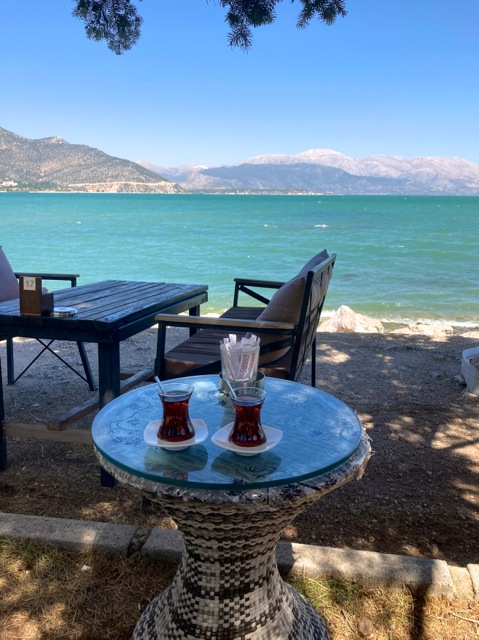
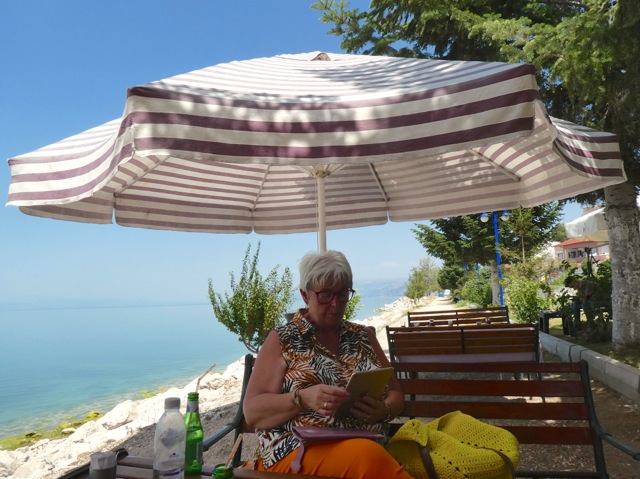
Sandwiched as it is between the lake and the mountain, the town centre is not large and it took no time to explore. The back streets, of which there are not that many, are all concentrated in this area. The shortest street we found was the length of a parked Renault Clio Estate, the narrowest the span of my arms, but in those streets you can find all you need to live a comfortable life or run a profitable business.
The most significant historical buildings are the restored 13th century hamam, the very lovely Dündar Bey Medrese, also restored and now housing local arts and crafts stalls, and opposite, across a courtyard, the Hizir Bey Camii, dating back to the 1230s. This ancient mosque is square in design, with a flat roof supported by wooden columns and stone arches. Light and spacious, it is a haven of peace, as are all mosques, despite the constant traffic passing outside.
Finding ourselves endowed with a lot more energy, courtesy of the cooler temperatures, we spent the afternoon visiting the Lake Kovada National Park, up in the hills about thirty minutes south of Eğirdir. Unfortunately, because of the ongoing wildfire emergency, the government had shut down all the national parks, so the car park and visitor centre were closed. No matter, we took a delightful drive around the lake through forests of handsome Turkey oaks and giant broadleaved plane trees. Kovada is a beautiful location and, while we were there, totally deserted. The place is gorgeous and we absolutely loved it!
On returning to Choo Choo, we succumbed to Captain Muammar’s charms and boarded his little chug-chug boat for a voyage parallel to the causeway into Eğirdir’s small harbour and back. Impeccably dressed as a sea captain, he was lovely, and abandoning the wheel entirely, entertained us with an enthusiastic burst of traditional Turkish folk dancing as the boat bobbed and weaved on its own wandering course vaguely in the direction of Yeşilada. Had we missed the island and with the lake behind coming in at 482 square kilometres, we could have carried on partying for quite some time.

We set out to explore the island after dinner, meandering up an alley or two up into the centre of the old village. There’s a small communal square at the highest point with an old coffee shop frequented by locals, all sat on chairs set out on the pavements outside their homes and enjoying a good gossip. Amongst the newer concrete buildings, many of the older houses are of classical construction, with stone walls on the ground floor and wooden on the upper storey. Some are in a parlous state of disrepair, but quite a few have now been beautifully restored. Many have handsome Ottoman bays above the front door and, surprisingly, quite a few are sheathed in tin panels, no doubt to provide protection for the timbers beneath.
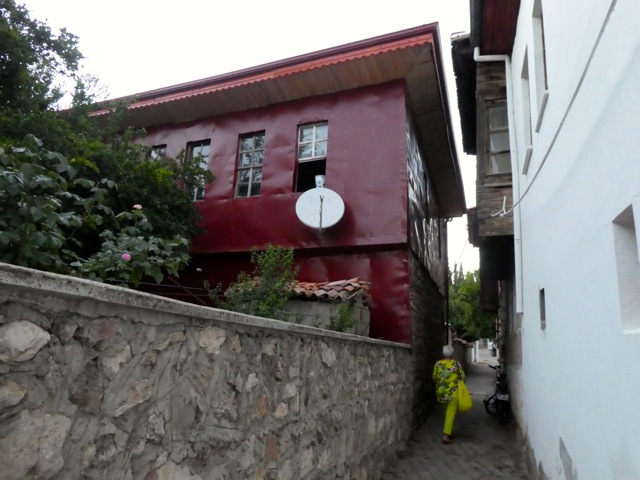
It is a fascinating place, full of nooks and crannies and surprising sights, but absolutely impossible to get lost – all you have to do is walk downhill and you’ll quickly reach the lake’s edge!
We struck out in different directions over the course of the next few days. One excursion took us along the shoreline of Eğirdir lake for many kilometres before the road curved away and entered a vast apple-growing yayla, bigger than that at Elmali. We drove for quite some time. Funny how these roads look quite short on the map.
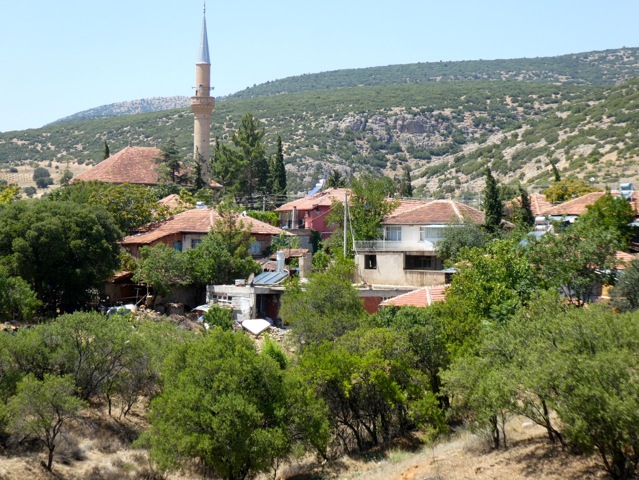
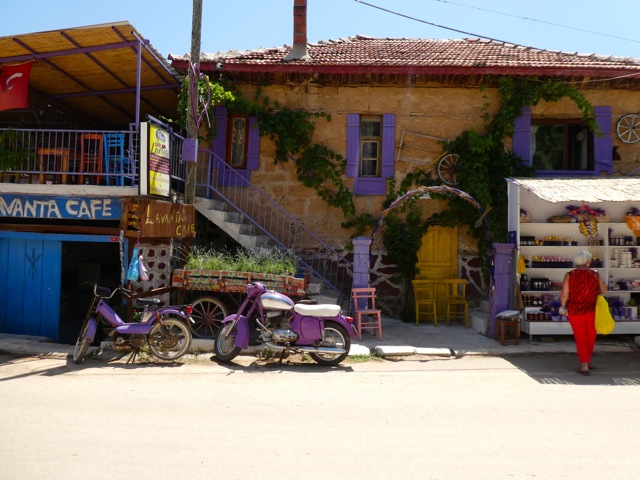

There was method in our madness, though, and we were on the hunt for the tiny village of Kuyucak. This delightful little hamlet is noted for its lavender fields, and there was no mistaking them when we got there. Firstly, after parking the car, we had a lavender ice cream each, then we were called over by a large group of chatty and cheerful local ladies all sat together bunching lavender stems. The village was full of lavender-painted houses, tractors, cars, motorcycles and mopeds, and on our way back, we stopped at a roadside lavender farm, inspected the lavender fields and had lavender flavoured fizzy pop while looking at row upon row of lavender plants and a truly ancient lavender-coloured Renault 12 Estate stuck up on a plinth.
Couldn’t quite put my finger on it, but some subtly indefinable sixth sense told me this whole area is really big on lavender!
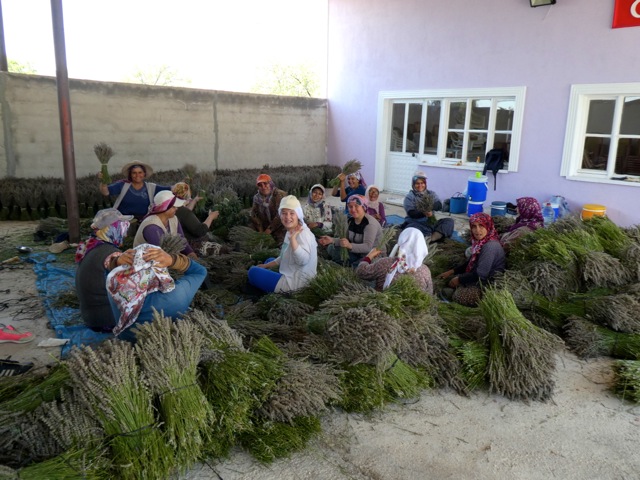
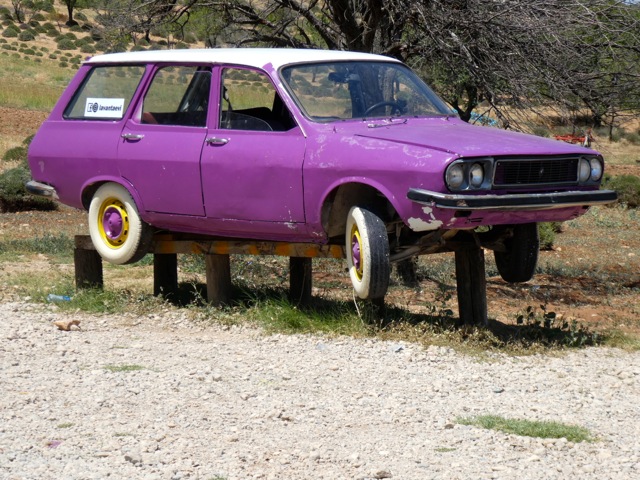
That evening, we had to make a decision. Our original plan had been to leave Eğirdir and drive on to İbradı and Ormana, famous for its Button Houses, but at that time the forest fires around Manavgat were burning out of control and far too close for comfort. It’s not wise to drive into possible danger so we agreed to stay with Hüseyin for another two days.
With that settled, we walked into town along the causeway for our evening meal, selecting the Kebapci Yusuf KY restaurant. There was only one dish for me, the intriguingly risqué sounding haşhaş poppy kebap. Don’t really know what I expected but it was nicely spicy, there were definitely no hallucinatory side effects whatsoever and I didn’t jump into the lake to rescue Timothy Leary in a kaleidoscopic Hawaiian shirt on the walk back to Choo Choo! D’you know, the entire meal was less than half the price we’d pay in Fethiye! That was a bit of an eye-opener, I can tell you.
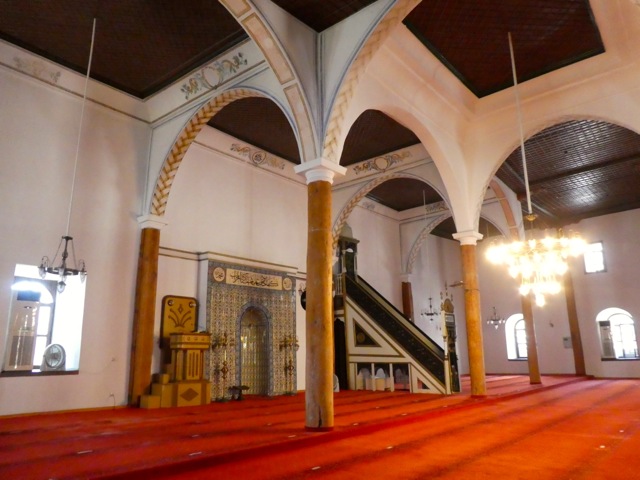
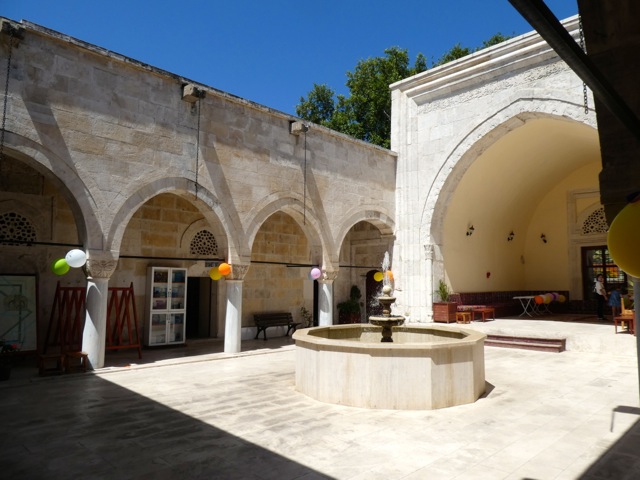
One of the real joys of staying on Yeşilada is the complete stillness in the morning. Very few cars passed, very few people wandered by and the only sounds came from the quacking ducks down on the shoreline. There is a lovely stillness at night as well, something we do not get in Fethiye. Absolute silence settles over the island apart from the very occasional yowl of scrapping cats. No dogs barked, no chickens clucked, no music thumped and there was no hum of traffic – perfect. I can also tell you this place definitely likes to ease itself into the business of the morning at a very leisurely pace, all to the sight of swifts wheeling and dipping over the water and the happy sociable chirrup of sparrows in the trees. Sitting out on our rooftop terrace first thing, it was a supremely relaxing way to greet the day.
Our next excursion was to the largest of the three main lakes in the area, and we drove down to its southern end to Beyşehir, the town that gives this lake it name. Again, we’ve only ever briefly stopped briefly here on our way eastwards, but not this time. We explored the town, sat in a tea garden by the Taşköprü, the very stylish early 20th century combined sluice and bridge that regulates the flow of water leaving the lake, and while wandering along the shady canal, passed a köşk occupied by a large family group who overheard us speaking English. Moments later, the two mums and their five kids ran after us and gathered around eager to try out their carefully-learned English skills. We had a wonderfully giggly, cheerful conversation and all posed for photos. Yes, we like Beyşehir.
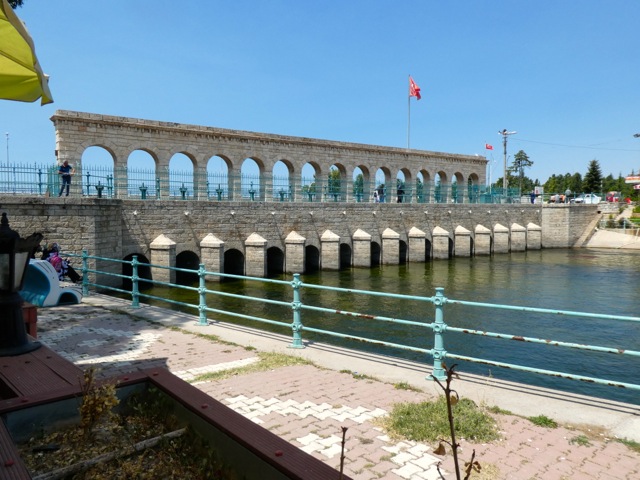

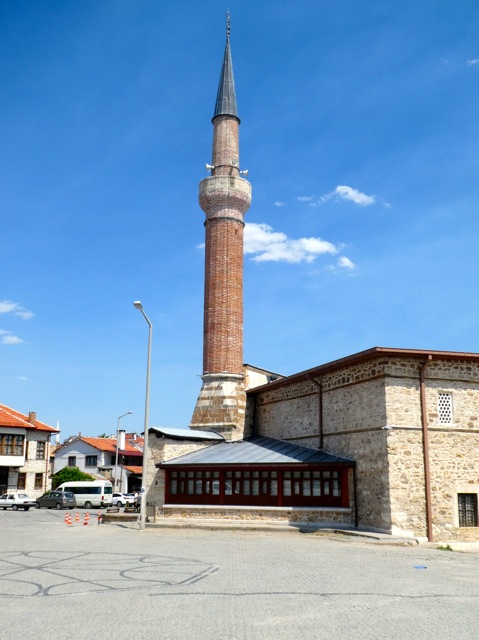
The journey back to Eğirdir was along virtually empty roads through rolling fields of harvested crops, the landscape a patchwork of stubbly yellow, with distant mountain ranges made hazy by the summer heat. We knew we were nearly home when the apple orchards began to reappear again, which I pointed out to Jan. Of course, I was confident in my observation because, being the navigator, I had the map on my knees! That’s a proper map, made of paper and unfolded to reveal the relevant area, as opposed to an app, which only shows your route, displays far too small a surrounding area to see if there’s anything of interest worth visiting nearby and which I struggle to operate with my sexagenarian fingers.
We spent a quiet last day, sitting at the end of the island enjoying coffee and looking out across a little rose bush-filled park to the ever-present lake beyond. We were made very aware of the continuing fight against the forest fires by the constant arrival of a yellow flying boat which dipped down, skimmed the surface of the lake to pick up a fresh load of water before flying off to one of the many conflagrations. He had a busy morning, reappearing every twenty minutes or so to repeat the manoeuvre.
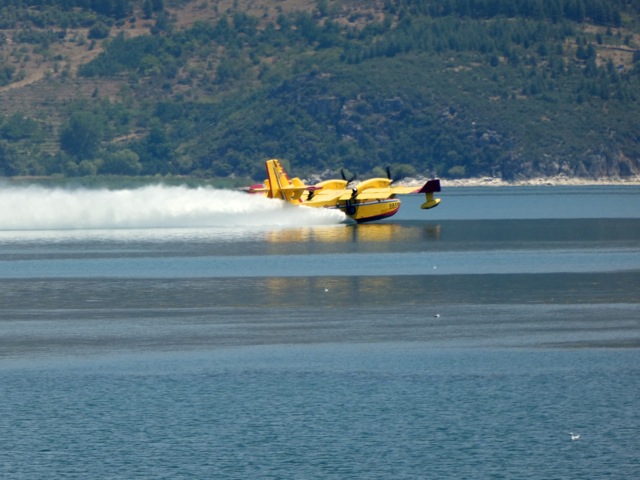
We experienced something unusual in the early evening. All of a sudden, the weather turned from tranquil sunny calm to howling high winds. Trees thrashed, the swifts struggled to stay airborne, furniture overturned, white horses reared up on the lake and actual waves began to wash along the shore, all in less than fifteen minutes. The sun went a sickly shade of yellow, the skies turned an ominous grey and mountains faded into the distance. Hüseyin told us it was the Lodos, an eastern Mediterranean blow that has always been extremely dangerous to shipping, from ancient times to the present day. Even now, if the Lodos is blowing particularly hard in the Bosphorus, no ship is allowed to pass.
The following morning, calm had returned, which was a good job as our stay in Eğirdir had come to an end and it was time to return home to Fethiye. We had breakfast overlooking the lake for the last time, set off down apple valley, past Kovada Lake before joining main road south of Isparta and heading on down to Antalya.
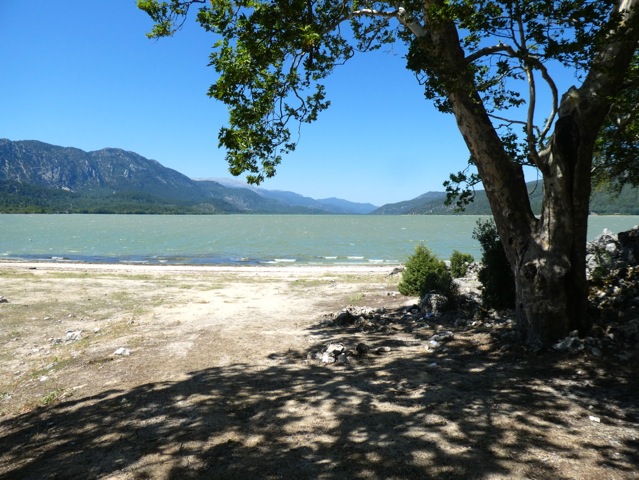
To our amazement, we had to pull off the main road just north of Antalya due to a sudden torrential downpour, the visibility deteriorating to the point where driving became dangerous, not that a complete loss of visibility bothered any of the locals, of course, who drove on at their usual terrifying speed with windscreen wipers on frantic mode! By good fortune, the black clouds headed off towards Manavgat where, we later heard, the rain was instrumental in extinguishing the fires around the town.
Antalya is now a huge sprawling city of millions, but we knew the way to IKEA, and two hours later we knew the way from IKEA out of Antalya and back home to Fethiye.
We spent five days in Eğirdir and absolutely loved every minute. If you’re heading to the town, we recommend stopping on Yeşilada. The island is serenely quiet in the morning, is packed with interesting old buildings, has plenty of pensions and small hotels to cater for visitors, and if you do pause outside the Choo Choo and a man appears asking if he can help, then take him up on the offer. You won’t be disappointed.
Hüseyin Paşik, Choo Choo Pension & Halikarnas Restaurant, 0530 404 2383


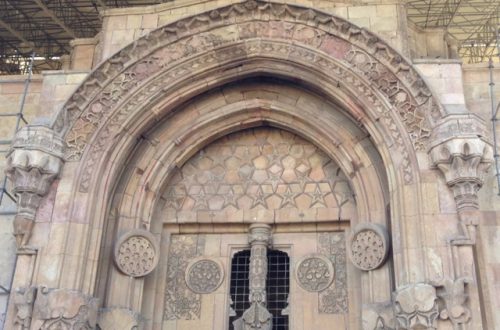
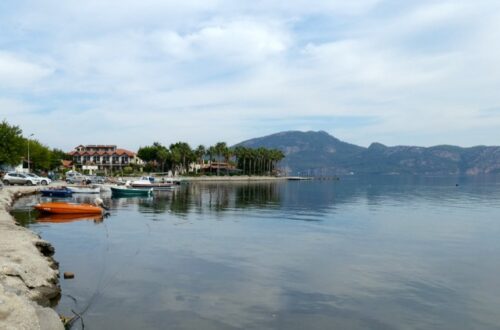

2 Comments
Elizabeth Burfitt
We enjoyed reading your article but were disappointed that you did not make it to the button village which sounded intriguing. We have looked it up and put it on our list for future travels.
You may remember meeting us in Helikarnus Restaurant – we were en route from Capidocia to Fethiye with our visiting famiy. We stayed at the Gol Pension, next door to Choo Choo, and it was a delight. It is a truly family run hotel, the rooms had amazing views across the lake and we had an excellent Turkish breakfast, properly served instead of the ubiquitous buffet. We had lots ofinteresting conversation and a parting gift of bottled water. Definitely one to remember.
Happy travels! John and Betty Burfitt.
Mike Vickers
Hi John and Betty, thanks for your comment and yes, we were disappointed not to have visited the button houses, but at the time the forest wildfires were uncomfortably close. That remains a trip for a later date. We do remember you, what with the sound of English being spoken something of a rarity nowadays. Staying on the island at Eğirdir was lovely and your experiences at the Gol Pension mirrored ours at Choo Choo. We’ll definitely consider going back next summer, irresistibly drawn by the cooler temperatures. If you want to consider another road trip in the future, try Selçuk. We’ve just returned from a wonderful stay and I’ve just published the article.
Regards, Mike and Jan